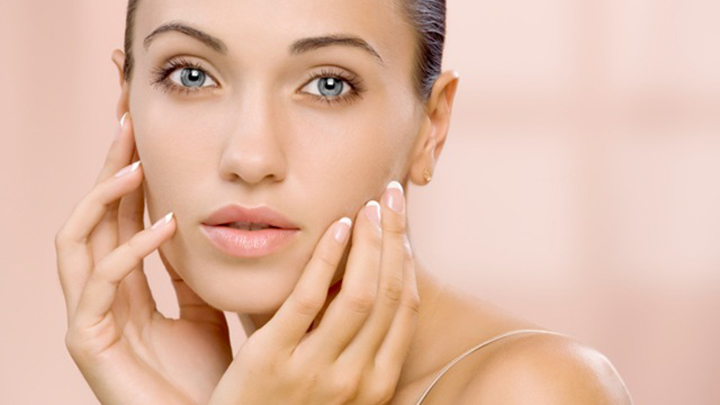Few of us make it to the adulthood without a few surface imperfections – perhaps a scar from a teenage cycling accident, a strange mole caused by past sun exposure, or broken veins brought on by birth control pills, pregnancy, or just genetics. If you’re like me, these skin flaws make me dread the summer, when I have to decide between the comfort of sundresses, shorts, and sleeveless shirts, or the camouflaging ability of long skirts, trousers, and sleeved shirts. There is a host of new treatments available to reduce the appearance of these common surface flaws. Most scars cannot be eliminated completely but they can be softened.

Scars
Many of us, have quite a number of scars, thanks to childhood cycling accidents, teenage clumsiness, and an adult run-in with an adorable yet boisterous kitten. Exfoliating ingredients such as glycolic acid and salicylic acid help soften the appearance of scars, and so do pigment-lightening ingredients such as kojic acid and hydroquinone.
A scar is the skin’s healing response to an injury or wound and is composed mostly of inelastic collagen fibers. Scar tissue is disorganized and appears distinctly different from the normal tissue surrounding it. For bad scars, onion extract (also called cepium allium) has been found to soften the appearance of all types of scars if it is used two to four times a day for 1 to 4 months. Topical gels or bandages containing silicon have also been shown to soften the appearance of all types of scars. You either use the gel two to four times a day or wear the bandage continually for 4 months. A dermatologist can also soften the appearance of scars through microdermabrasion, or laser resurfacing. Microdermabrasion is conducted by spraying a stream of fine aluminum oxide crystals directly on the skin, removing the surface layer, and stimulating the production of new skin cells and collagen, giving a smooth and healthy glow to the skin surface.
Mole check
Moles are not inherently dangerous. It is only “irregular” moles – or a mole’s sudden “irregular” behaviour – that may indicate you’ve got skin cancer. To catch a potential problem while it is still small, examine your entire body monthly, carefully studying each mole. Visit your doctor if you find any of the problem signs:
- A mole that has changed colour, size, or shape.
- A mole that itches, bleeds, or has a crusty surface.
- A mole with an asymmetrical border.
Stretch marks
Perhaps no other skin flaw seems to cause such dissension among dermatologists. Some say stretch marks are treatable, some say the marks are mildly treatable, and others say there is nothing you can do to make them better. Daily applications of a tretinoin cream, or a product containing glycolic acid or onion extract, have been shown to soften the marks in some people. So, too, have microdermbrasion, intense pulsed light treatments, and laser resurfacing. And there are people who swear by pure vitamin E or jojoba oil. If you have stretch marks and want to diminish them, you may have to experiment with several types of treatments to get results.
Vein troubles
Broken veins – also known as spider veins, thread veins, or broken capillaries – are thread-like veins that have become stretched out and distended. These unnaturally dilated veins fill up with an abundance of blood, making them extremely visible beneath the skin. At one time, dermatologists cauterized these small vessels with electric current. Cosmetic lasers soon replaced cauterizing. Epi Light® (also called PhotoDerm®) is a modern treatment that produces good cosmetic results on spider veins, using pulses of intense light.
Varicose veins – which occur most often on the legs – have a dark blue, green, or purple cast. They occur as a result of a malfunction of the vein’s valves. Normally the valves help propel blood to the heart but they can be stretched due to pregnancy, obesity, blood clots, or a hereditary defect. When this happens, the valve is unable to close normally, and blood pools in the vein. If the problem is mild, a saline solution can be injected into the vein, encouraging the vein to restrict. In moderate cases, your doctor can close off the vein at the valve. In severe cases, your doctor might remove the entire vein.
Bad breath
To deal with stinky breath, keep your mouth oxygenated by simply drinking lots of water all throughout the day. Opt for over-the-counter oral rinse with chlorine dioxide and use it at before going out and before hitting the sheets. Your daily diet can also improve your breath, so chew on oxygen-rich veggies such as celery and herbs like parsley. If all these tips give no improvement, go see your dentist as soon as possible.
Hand warts
Warts are caused by the human papilloma virus. You can get warts by having close contact with a person who has them. Fortunately for those who have warts, these are treatable. You can just go to your dermatologist for a warts removal treatment, wherein a laser or cautery procedures will be administered. You
Your doctor can also prescribe you to use salicylic acid, as this can dissolve warts. Warts, however, can grow back. So it is best to always observe proper hygiene as well as to avoid using other people’s belongings like towels, body scrubs, or clothing.
